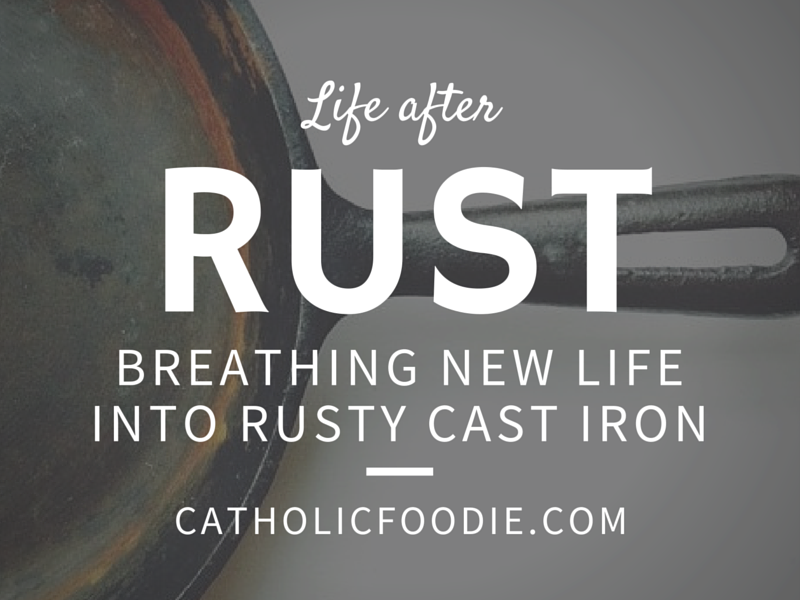Life After Rust: Breathing New Life into Rusty Cast Iron Skillets

For me, joy is cooking. And one way to intensify that joy is to cook with cast iron. Whether it is frying bacon and eggs, sauteing fresh onions and bell peppers, or slowing making a roux the color of dark chocolate, nothing beats the feel and the efficiency of cast iron.
If you are like me, though, sometimes life gets in the way and, despite my best intentions, I fail to care for my cast iron the way I know I should. And to be totally honest, I now have two cast iron pieces – one skillet and one larger pot – that are unusable because of rust.
That’s why I’m so glad to run across this article by Bon Appetit magazine. It was originally posted back in May 2015 under the title Just Rust Us: You Can Bring a Cast-Iron Pan Back From the Dead.
It isn’t hard to maintain a cast-iron pan, but sometimes life gets the better of us and we don’t follow proper use, maintenance, or cleaning protocol. Sure, you know not to cook acidic tomatoes or a wine-based sauce in your skillet. And yep, you remember that you can skip the soap and water, and instead clean the pan with coarse kosher salt and a rag. But just in case you forgot, lent your pan to a less-discerning friend, or just inherited an old, beat-up pan, it’s good to know how to resurrect a wrecked and rusted skillet.
We spoke to two experts in all things cast-iron: Mark Kelly, PR and advertising manager at Lodge Cast Iron, and Mike Whitehead, founder ofFinex Cast Iron Cookware. If you’re dealing with cast-iron rust, you can breathe a sigh of relief. First of all, you’re not screwed. You can save that pan (that’s excellent news for this writer). Here’s how to bring your rusty cast-iron skillet back from the dead.
The Vinegar Soak
If the layer of rust on your pan is superficial (meaning it’s just on the surface, like the picture at the top of this page), you can probably skip this step and go right on to scrubbing. But for seriously rusted-out and busted pans, Whitehead suggests a vinegar soak. Mix basic white vinegar with water in equal parts and submerge your pan in it. Use a bucket or plug the sink for really big pans; the entire skillet should be covered with the vinegar mixture. You can soak it for up to eight hours, but Whitehead suggests checking it early and often. It might be done in just one. The vinegar will dissolve the rust, but once that’s gone, the vinegar will go to town on the original cast surface of the pan. The possible pitting that can result is irreversible, so pull your pan from the soak as soon as the rust flakes away easily. If the pan has gotten so rusted that it’s deeply pock-marked or pitted, Whitehead says to forget it: “That one’s for decoration.”
The Scrub
At this point, you have removed the seasoning. Don’t freak out. It’s okay! That was the point. So while it’s not a good idea to scrub a seasoned pan with soapy water, it’s totally okay in this instance. Use a mild detergent and warm water so it dries quicker, and clean away any lingering rust with a mildly abrasive sponge. Do not put your pan in the dishwasher (“That’s a straight path to hell,” says Kelly, and he’s only being slightly hyperbolic.) A green scrub pad or steel wool are good options, but avoid aggressively abrasive scrubbies, like copper scouring pads. Dry it immediately with a towel so it doesn’t rust again. Whitehead likes to ensure the pan is totally dry by popping it in an oven set to warm.
There’s more. Like how to re-season your cast iron and how to maintain it so that rust doesn’t become a problem again. Check out the rest of the article at its original location at Bon Appetit magazine by clicking here: Just Rust Us: You Can Bring a Cast-Iron Pan Back From the Dead.